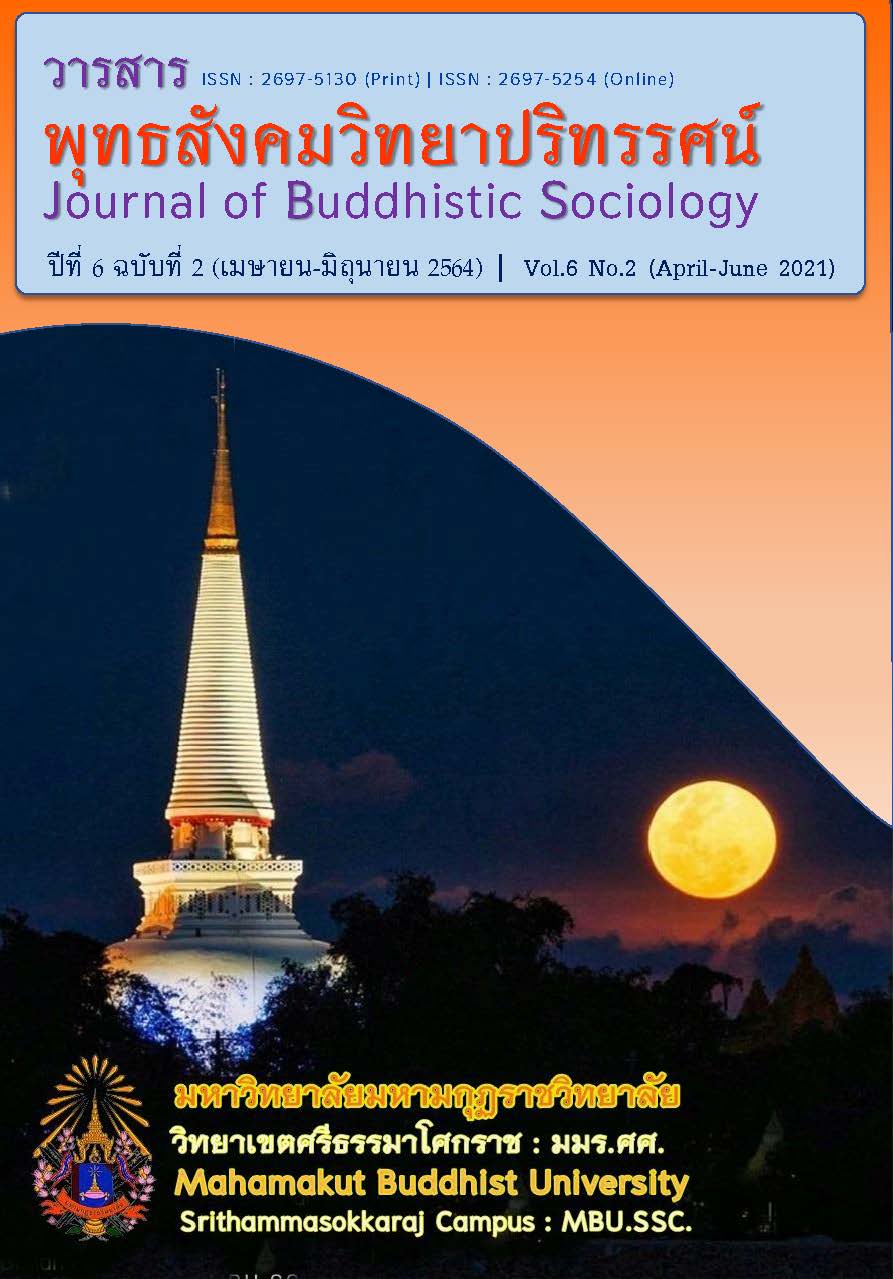ROLES OF MONKS TEACHING MORALITY IN SCHOOLS UNDER MAHAMAKUT BUDDHIST UNIVERSITY, LANNA CAMPUS
Main Article Content
Abstract
The objectives of this research were as follows; 1) to study the duties and roles of monks teaching morality in schools 2) to study problems and obstacles in their duties and roles of monks teaching morality in schools 3) to propose guidelines for development of teaching and learning management of monks teaching morality under Mahamakut Buddhist University, Lanna Campus. This was qualitative research. Purposive sampling method was used to select the sample group consisting of 15 people which were 5executive administrators; lecturers and staff from Mahamakut Buddhist University, Lanna Campus, 3 mentors of monks teaching morality in schools and 7 representatives of monks teaching morality in schools. The research tools were in-depth interviews.
The results of research showed that:
1. The monks teaching morality in schools had duties and roles in providing academic service to society. They were qualified through the training process in accordance with the curriculum and they served to instill morals and ethics to students and youth and lived as a good role model. They did not focus on teaching profession, but on practical skills in integration of Buddhism into arts, culture, traditions and religious ceremonies in houses, temples and schools for maximum benefit.
2. Problems and obstacles for the duties and roles of monks teaching morality in schools were as follows; for education, the monks did not understand curriculum. For teaching, they lacked the knowledge of teaching techniques and writing lesson plans. Also, teaching materials were out-of-date and inconsistent with the contents. The monks also lacked development of teaching materials.
3. Guidelines for development of teaching and learning management of monks teaching morality in schools were as follows; for education, the monks should raise the level of their education and develop a curriculum for monks teaching morality. There should be seminars and workshops to modernize teaching. For teaching, there should be a qualified teaching curriculum, methods of using various and modern teaching materials to suit the current situation and conform to the course contents.
Article Details
References
กรมการศาสนา. (2548). คู่มือการดำเนินงานตามโครงการครูพระสอนศีลธรรมในโรงเรียน. กรุงเทพมหานคร: โรงพิมพ์คุรุสภา.
กระทรวงศึกษาธิการ. (2542). พระราชบัญญัติการศึกษาแห่งชาติ พุทธศักราช 2542. กรุงเทพมหานคร: สยามสปอรต์ ซินดิเคท.
บํารุง สุขพรรณ์. (2547). เอกสารประกอบการถวายความรู้พระสงฆ์ : พระสงฆ์ผู้นําการพัฒนาสังคมไทยที่ยั่งยืน. กรุงเทพมหานคร: โรงพิมพ์มหาวิทยาลัยธรรมศาสตร์.
บุญชม ศรีสะอาด. (2547). การพัฒนาการสอน. กรุงเทพมหานคร: โรงพิมพ์สุวีริยสาส์น.
พระมหาทวน นวลสาย. (2544). ปัญหาการจัดการเรียนการสอนวิชาพระพุทธศาสนาของครูระดับมัธยมศึกษา . ใน วิทยานิพนธ์ศึกษาศาสตรมหาบัณฑิต. มหาวิทยาลัยมหาสารคาม.
พระมหาสังเวียน ปญฺญาธโร. (2550). บทบาทของพระสงฆ์ในการนำหลักพุทธธรรมมา ประยุกต์ในการพัฒนาเศรษฐกิจชุมชน กรณีศึกษา พระครูสุภาจารวัฒน์. ใน วิทยานิพนธ์ปริญญาพุทธศาสตรมหาบัณฑิต. มหาวิทยาลัยมหาจุฬาลงกรณราชวิทยาลัย.
พระมานิตย์ โชติธมฺโม (อรรคชาติ). (2552). การศึกษาปัญหาและแนวทางการแก้ไขปัญหาการปฏิบัติงานของครูพระสอนศีลธรรม. กรุงเทพมหานคร: สํานักมหาวิทยาลัยมหาจุฬาลงกรณราชวิทยาลัย.
รุ่ง แก้วแดง. (2553). ปฏิวัติการศึกษาไทย (พิมพ์ครั้งที่ 5). กรุงเทพมหานคร: พิมพ์ดี.
สำนักงานคณะกรรมการพัฒนาการเศรษฐกิจและสังคมแห่งชาติ. (2560). แผนพัฒนาเศรษฐกิจและสังคมแห่งชาติ ฉบับที่ 12 (พ.ศ. 2560 - 2564). กรุงเทพมหานคร.
สำนักงานพระพุทธศาสนาแห่งชาติ. (2551). การจัดสาระการเรียนรู้พระพุทธศาสนา. กรุงเทพมหานคร: ธรรมสภา.
Graham, C.R.; Allen, S. & Ure, E. (2003). Blended Learning Environments: A Review of the Research Literature. In Unpublished Manuscript. Provo: UT.


